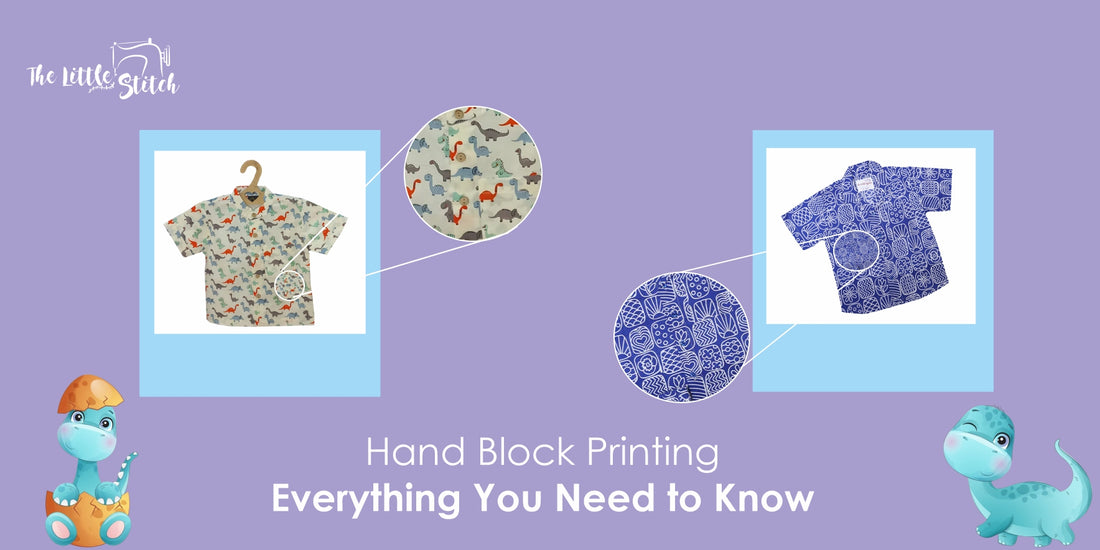
Hand Block Printing - Everything You Need to Know
Share
India has a rich heritage of textile, handloom, and handicraft. One of the many beautiful textile-related works in India is the evergreen block printing. An ancient craft that’s still thriving today, hand block printing brings intricate designs and vivid patterns to life in a mesmerising manner. Playing around with many handcrafted blocks, and natural designs, block printing is an art worth knowing about. If you’re new to this technique and want to explore its beauty, here’s a beginner-friendly guide to everything about block printing on clothes.
What Is Block Printing?
Block printing is a technique where people manually print designs on fabric. Artisans use carved wooden blocks to create stellar designs on clothes. The process starts with carving blocks of required designs. It further involves dipping the block into dye or ink and stamping it onto the fabric, creating repeated patterns. The blocks used for this technique are hand-carved. Also, different blocks can be used to print various parts of a cloth. This is such an intricate art that it requires precision and patience but results in stunning and unique designs.
The History Behind Block Printing
Handblock printing has been around for centuries. It originated in China around 220 AD and gained prominence in India by the 12th century. In India, states like Rajasthan and Gujarat are particularly famous for their block-printed textiles. Over the years, the craft has become an integral part of the country’s cultural heritage. More often than not, it is associated with traditional clothing such as saris, scarves, and dupattas. However, today, it’s used on everything from home textiles to modern fashion to kids' clothes, like we do!
The Process of Block Printing
The block printing process is simple yet extremely detailed. Here’s how it typically works:
- Carving the Block: Skilled artisans carve intricate patterns onto wooden blocks. Each block may represent a single part of the pattern or motif. An intricate motif can often require more than one block. For example, a flower motif may use three blocks, one for its borders, one for coloured petals, and one for stems and leaves.
- Preparing the Fabric: Before block printing is done, the fabric has to be prepared in a way that it can hold the print and colour. Hence, the fabric is washed and dried to remove any dirt or starch.
- Applying the Dye: The carved block is dipped into the chosen dye or ink. Usually, traditional hand block printing makes use of natural dyes, made of colours derived from vegetables and flowers.
- Printing the Design: The block is then pressed firmly onto the fabric, transferring the design. This process is repeated across the fabric to create the pattern across the length and breadth of the cloth.
- Drying and Setting the Print: Once the fabric is printed, it is left to dry and sometimes heat-treated to set the colours.
Types of Block Printing
In India, different states and regions are famous for artisans who have their own styles of block printing. Some popular types in India include:
- Bagru Printing: Bagru print is famous for its earthy tones and geometric patterns. Bagru printing often uses natural dyes like indigo and is mostly practised in the state of Rajasthan.
- Ajrakh Printing: Ajrakh print uses both sides of the fabric, creating complex patterns, often in red, blue, and black. Ajrakh is specifically famous in Gujarat.
- Sanganeri Printing: Sanganeri is characterised by its delicate floral designs. It is a vibrant and intricate form of printing that is often used for lighter fabrics. This has originated from the Sanganer district in Rajasthan
Why Is Block Printing Special?
Unlike machine-made prints, block printing is done entirely by hand. It gives each piece a unique touch and each piece is special in its own way. You’d often note some parts of a block-printed textile hold imperfections, these imprints of human work make the design feel authentic and one-of-a-kind. In true essence, these so-called imperfections make each piece beautiful.
